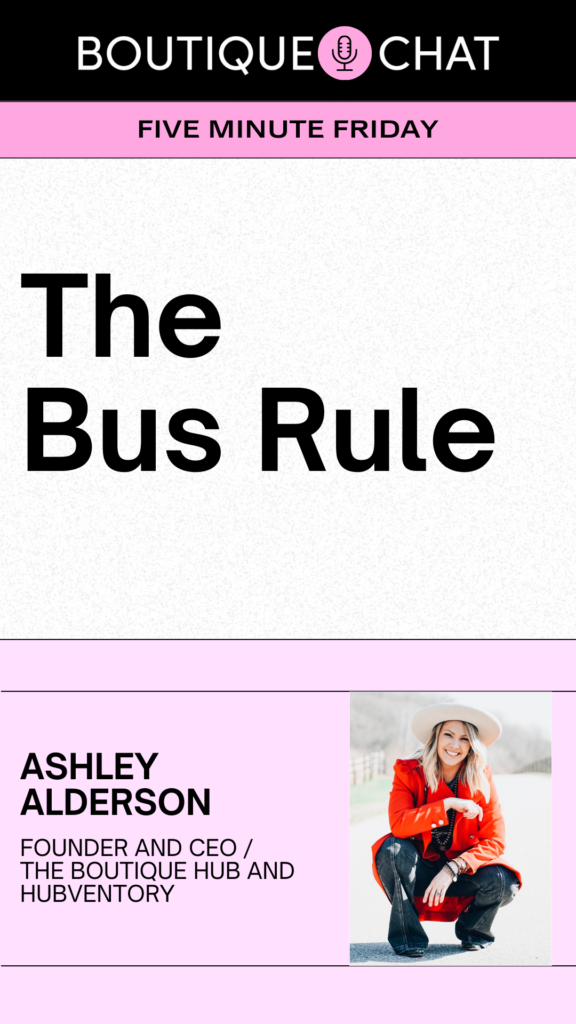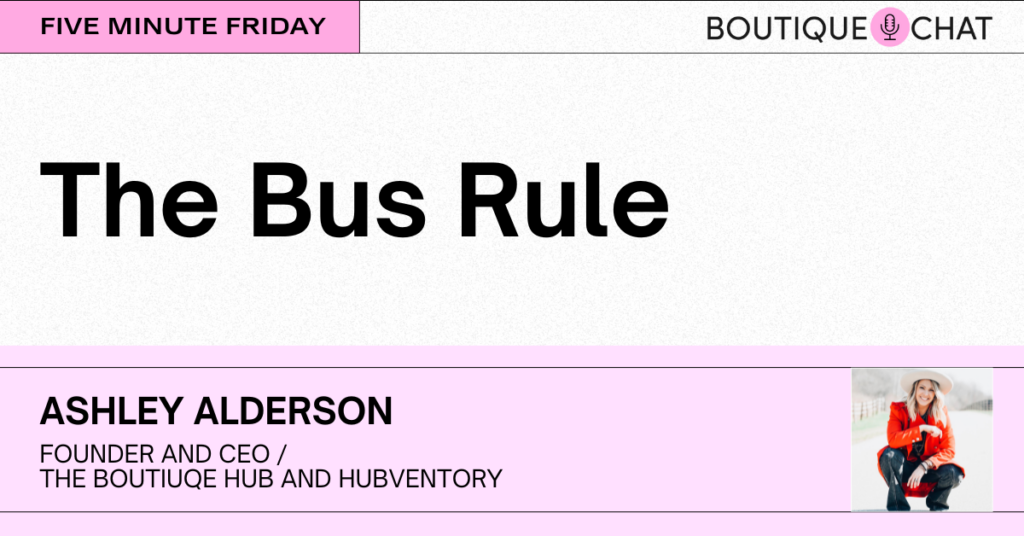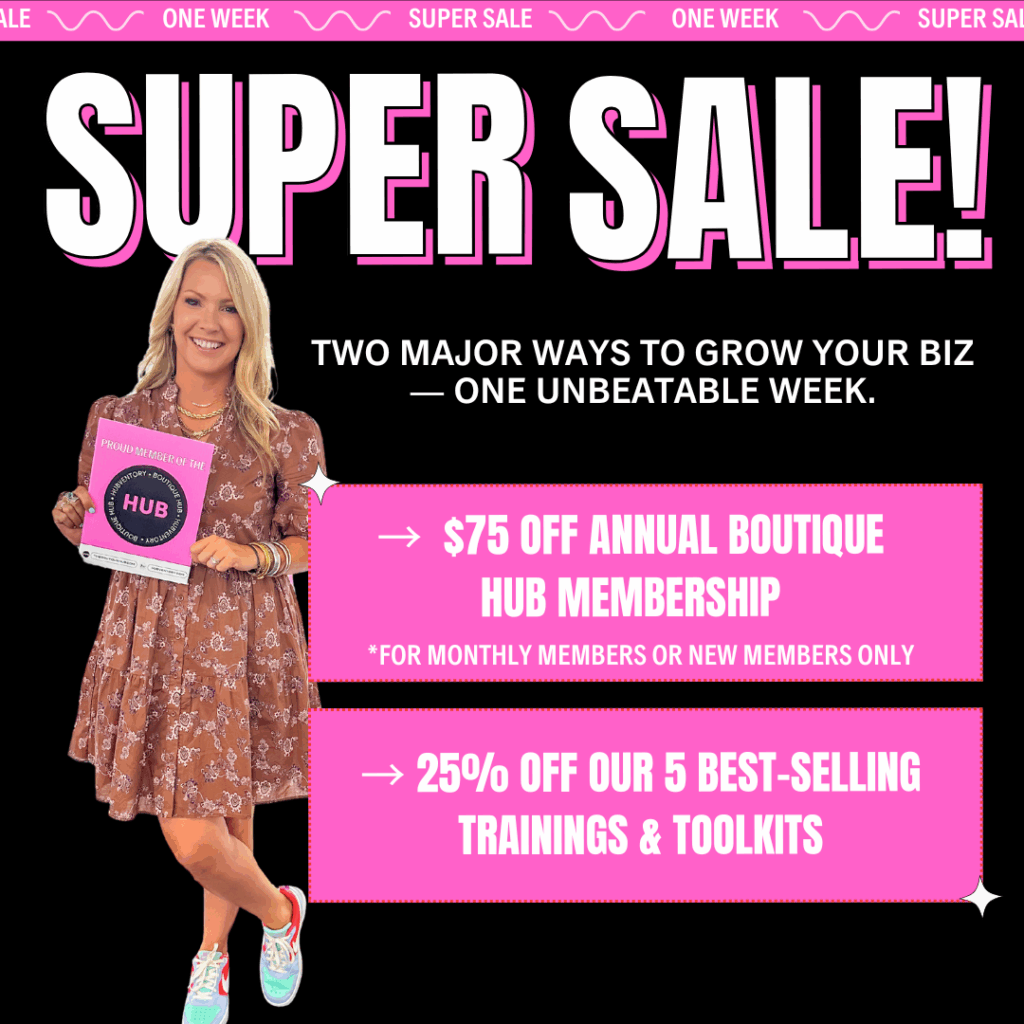APPLE PODCAST | SPOTIFY | YOUTUBE
Welcome to another edition of Five Minute Friday! Today, I want to explore a rather unusual, albeit important, scenario — what if you suddenly couldn’t manage your business? It’s a scenario we seldom like to consider, dubbed the “Bus Rule,” but preparing for it is crucial for any entrepreneur aiming for long-term success and resilience.

The Bus Rule
Why Consider the “Bus Rule”?
Imagine this: you’re unexpectedly unable to run your business. This could be due to a myriad of reasons — health issues, family emergencies, or other unforeseen circumstances. Could your business continue without you at the helm, even temporarily? If the answer is uncertain, it’s time to think about solidifying your business’s operational foundation.
Building a Solid Foundation
In my conversations with business owners, when they encounter growth plateaus, their instinct is often to look externally — more social media exposure, increased advertising, etc. However, the solution often lies within. To build a “skyscraper” business, one must first deepen its foundation. This ensures that as your business reaches new heights, it remains stable and secure.
Implementing the “Bus Rule”
The “Bus Rule” focuses on having clear, accessible operational plans. Here’s how you can start:
- Create Standard Operating Procedures (SOPs): Identify the three to seven critical daily tasks that are the core drivers of your business. This could include inventory management, order processing, customer service protocols, opening and closing routines, and your marketing strategies.
- Document Everything: As you perform each task, document the process. This can be done through written instructions, step-by-step guides, or even video recordings. Tools like Google Docs or Loom can be instrumental here. The key is to capture the details so that someone else could step in and perform these tasks without prior experience.
- Keep Your Documentation Updated: Whenever you tweak a process, update your documentation to reflect these changes. This keeps your operational manual current and more useful.
The Power of Preparation
This approach does more than safeguard your business against your sudden absence; it also sets the stage for scalability. By having detailed SOPs, you can more effectively train new employees, delegate responsibilities, and manage quality control. It turns the daunting task of training and onboarding into a streamlined, efficient process.
A Tool for Growth
Consider your operational document not just as a contingency plan but as a living tool that helps streamline training and operations. This not only prepares your business for unexpected events but also supports growth by making it easier to onboard new team members and maintain consistency in your operations.
Take Action
Start by tackling this project bit by bit. Dedicate a few minutes each day to document a process, refine an SOP, or record a procedure. Over time, you’ll build a comprehensive guide that not only secures your business’s future but also enhances its operational efficiency today.
In This Episode
Let’s Connect #AskAshley
- Have a question or guest recommendation? Let us know your feedback directly here!
- Do you love the Boutique Chat Podcast?! Subscribe to our podcast and after that, leave us a review on iTunes Apple Podcasts here!
Must Have Resources
- The Boutique Hub: Website | Facebook | Instagram | Pinterest | TikTok | YouTube
- Boutique Summit 2024
- Small Business Marketing Handbook
- Small Business Hiring Handbook
- Brand Owner Basics Masterclass
- Tradeshow Marketing Handbook
- 2024 Trade Show Calendar
- Boutique Hub Black
- Hubventory.com
Recent Posts:
- Demystifying Credit Card Processing: Rates, Fees, and What They Mean for Your Business
 Credit card processing can feel confusing, but it doesn’t have to be. This guide breaks down the different pricing models, explains what interchange fees actually are, and shows you how to calculate your true monthly processing cost so you can make smarter financial decisions for your business.
Credit card processing can feel confusing, but it doesn’t have to be. This guide breaks down the different pricing models, explains what interchange fees actually are, and shows you how to calculate your true monthly processing cost so you can make smarter financial decisions for your business. - The Boutique Hub to Deliver Retail Education at Mode Market 2026
 Mode Market 2026 is raising the bar for dance retailers everywhere. In an exciting new partnership with The Boutique Hub, the February event will now open with a full day of business education designed to help retailers boost sales, sharpen strategy, and build stronger brands. Taking place Wednesday, February 4, 2026, at the Henry B. González Convention Center in San Antonio, this collaboration blends Mode Market’s industry expertise with The Boutique Hub’s proven track record of empowering independent retailers. From mastering email marketing to optimizing in-store merchandising and turning local wins into online growth, attendees will gain the tools and insights needed to thrive in today’s ever-evolving retail landscape.
Mode Market 2026 is raising the bar for dance retailers everywhere. In an exciting new partnership with The Boutique Hub, the February event will now open with a full day of business education designed to help retailers boost sales, sharpen strategy, and build stronger brands. Taking place Wednesday, February 4, 2026, at the Henry B. González Convention Center in San Antonio, this collaboration blends Mode Market’s industry expertise with The Boutique Hub’s proven track record of empowering independent retailers. From mastering email marketing to optimizing in-store merchandising and turning local wins into online growth, attendees will gain the tools and insights needed to thrive in today’s ever-evolving retail landscape. - What’s Trending in Gift & Home: A Holiday Buying Guide for Independent Retailers
 Discover what’s trending in the gift and home industry with this Holiday Buying Guide for Home & Gift Retailers. In partnership with the Reps Are Local Too community, this guide highlights top holiday product trends, buying timelines, and merchandising ideas to help independent retailers plan inventory and maximize profits. Learn when to order, what to stock, and how to connect with local reps to keep your store ahead this season.
Discover what’s trending in the gift and home industry with this Holiday Buying Guide for Home & Gift Retailers. In partnership with the Reps Are Local Too community, this guide highlights top holiday product trends, buying timelines, and merchandising ideas to help independent retailers plan inventory and maximize profits. Learn when to order, what to stock, and how to connect with local reps to keep your store ahead this season.




